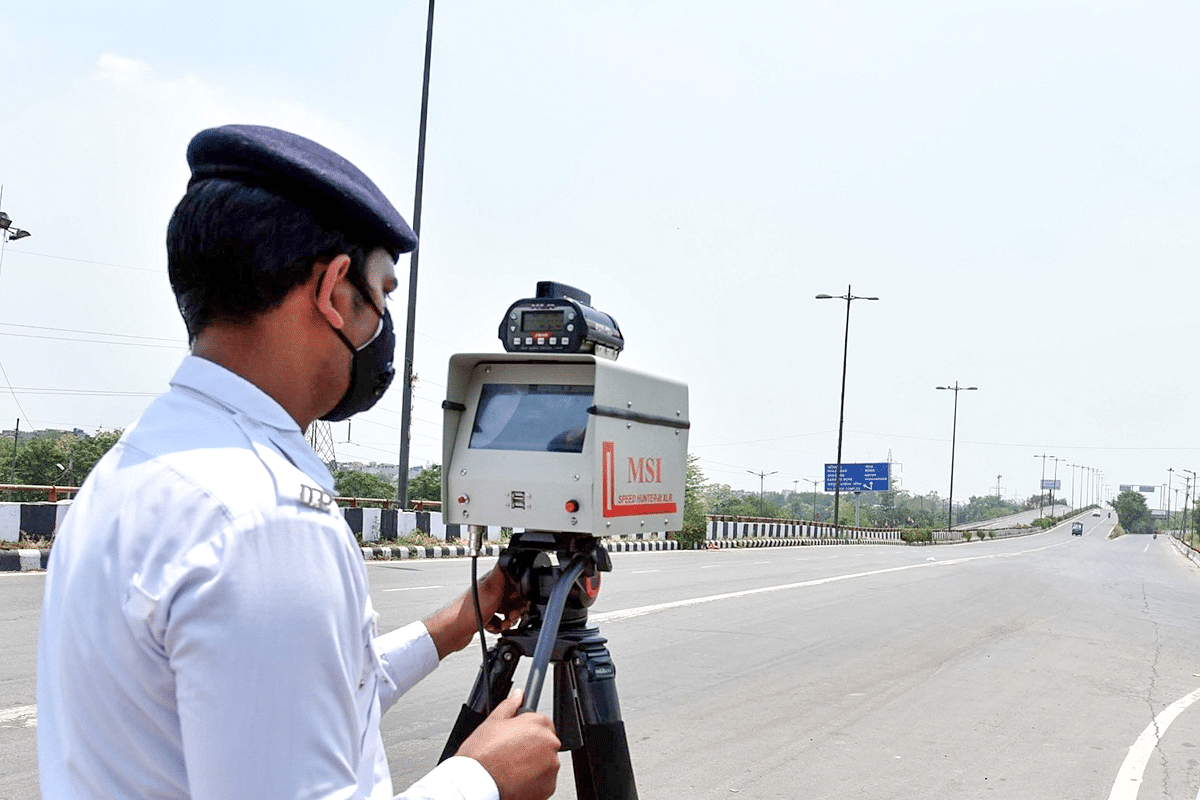News Brief
Mandatory: Traffic Offenders To Receive E-Challans Within 15 Days Of Transgression, Rules Centre
- New rules specify that the enforcement agencies must ensure that appropriate warning signs are conspicuously placed before the stretches are monitored by electronic enforcement devices and they must ensure that physical markings, physical stop lines and pedestrian crossings are clearly marked on the road.

A traffic cop measuring vehicle speed on a highway using a speed gun.
With the aim of bringing in more transparency, traffic enforcement agencies across the states will have to send challans to offenders within 15 days of recording any offence electronically.
Moreover, state governments and agencies concerned must ensure that commuters are notified about the installation of CCTVs speed detection cameras or any such device for recording traffic norm violations, according to the new set of rules notified by the Road Transport Ministry under the amended Motor Vehicles Act.
The rules specify that the agencies concerned must ensure that appropriate warning signs are conspicuously placed before the stretches are monitored by electronic enforcement devices and they must ensure that physical markings, physical stop lines and pedestrian crossings are clearly marked on the road.
Missing signage and physical markings are common across cities in India. These are prerequisites for enforcement of traffic rules.
Road Transport Ministry officials said one of the main objectives of the improved MV Act was to bring transparency in enforcement of traffic rules by using IT and CCTV recording.
To ensure that there is proper evidence to prove the offence, the rules have specified that the enforcement agency must store the footage till the disposal of challan and till the conclusion of proceedings initiated, including appeals.
The states have been encouraged to introduce body wearable cameras for enforcement personnel while managing the traffic or carrying out any enforcement drive.
They will also have to notify the offenders that the entire episode is being recorded for use as evidence.
Under this rule, the state governments will also ensure that appropriate electronic enforcement devices are installed at high-risk and high-density corridors on National Highways and state highways, and at critical junctions at least in all million-plus cities.
It has put out the list of 132 cities, which qualify for such electronic monitoring. Maharashtra has a maximum of 19 such cities, followed by 17 in Uttar Pradesh and 13 in Andhra Pradesh.
Now with the increased penalty for traffic offences, the states are generating more revenue and that should be ideally used for putting in the electronic enforcement system across all cities.
There is a need to shift from deploying traffic policemen for catching violators to using technology for recording evidence.
Traffic violations will reduce only when there is a fear of getting caught for every violation and that can happen only when we have electronic enforcement.
Support Swarajya's 50 Ground Reports Project & Sponsor A Story
Every general election Swarajya does a 50 ground reports project.
Aimed only at serious readers and those who appreciate the nuances of political undercurrents, the project provides a sense of India's electoral landscape. As you know, these reports are produced after considerable investment of travel, time and effort on the ground.
This time too we've kicked off the project in style and have covered over 30 constituencies already. If you're someone who appreciates such work and have enjoyed our coverage please consider sponsoring a ground report for just Rs 2999 to Rs 19,999 - it goes a long way in helping us produce more quality reportage.
You can also back this project by becoming a subscriber for as little as Rs 999 - so do click on this links and choose a plan that suits you and back us.
Click below to contribute.
Latest